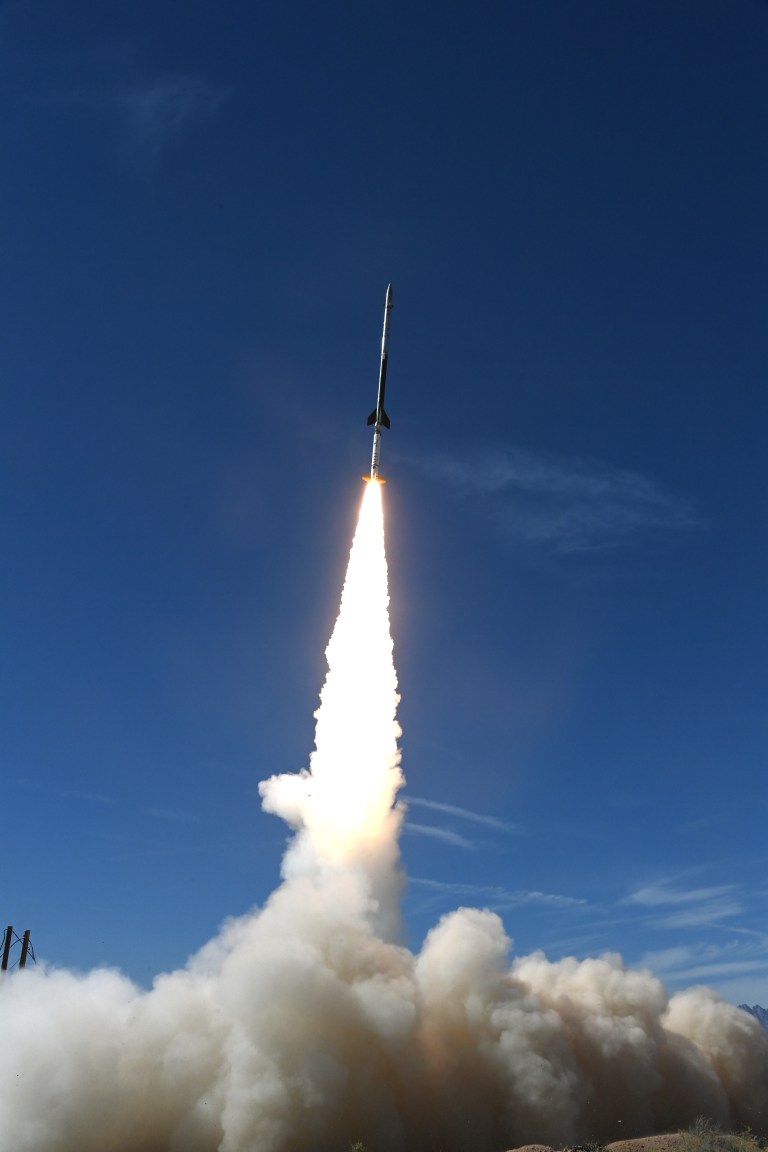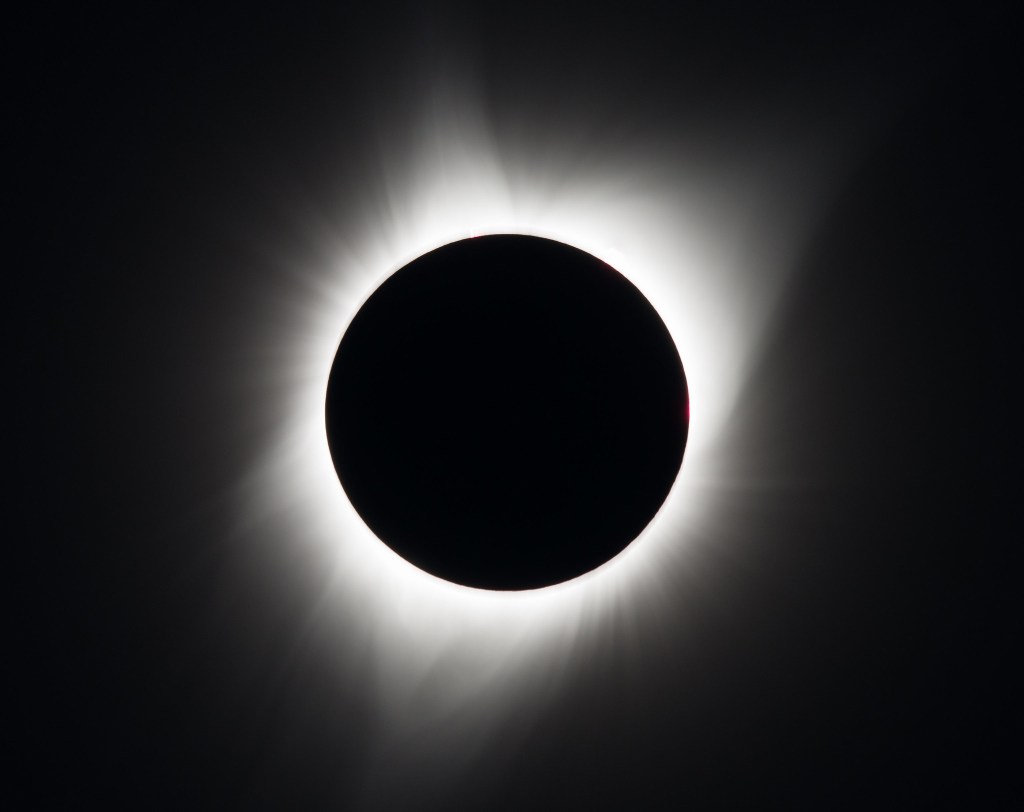
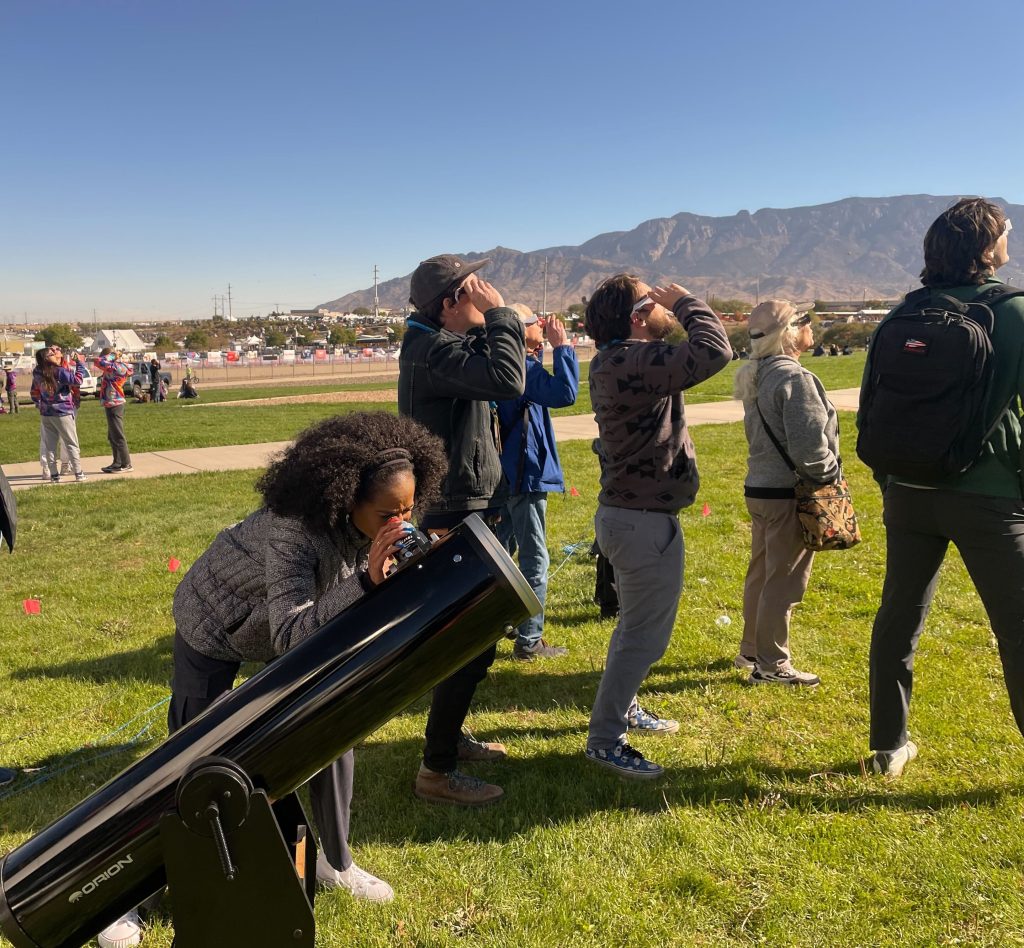

Studying the 2024 Eclipse
As the total solar eclipse darkened a swath of North America when the Moon blocked the light of the Sun for a few minutes on April 8, 2024, scientists had a unique opportunity to study the Sun, Earth, and their interactions.
Scientists on and off the path of totality are studying the Sun's outer atmosphere, called the corona, and the eclipse's impact on Earth's atmosphere.
LocationS
Across the U.S., from the ground and in the sky
DATE
April 8, 2024
Participating Institutions
80+
Goal
Study Earth's atmosphere, and the Sun's corona and active regions
Research from the Sky
Chasing the Eclipse with NASA’s High-Altitude Research Planes
Using NASA’s WB-57 high-altitude research aircraft, one project captured images of the eclipse from an altitude of 50,000 feet above Earth’s surface.
By taking images above the majority of Earth’s atmosphere, the team hopes to be able to see new details of structures in the middle and lower corona. The observations, taken with a camera that images in infrared and visible light at high resolution and high speed, could also help study a dust ring around the Sun and search for asteroids that may orbit near the Sun. The project, led by Amir Caspi at the Southwest Research Institute in Boulder, builds on Caspi’s successful experiment with a new camera suite.
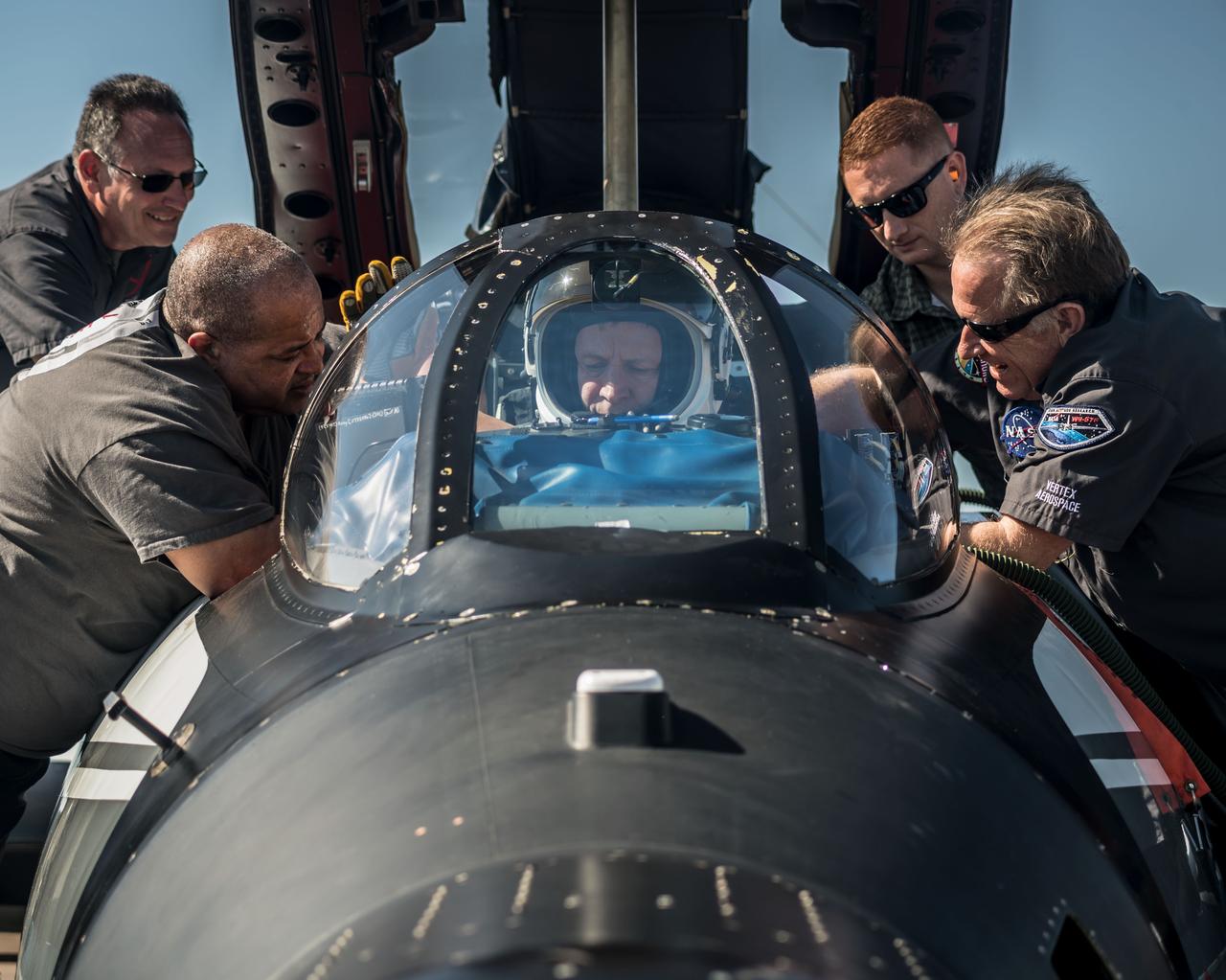
Airborne Imaging and Spectroscopic Observations of the Corona
NASA’s WB-57s also carried instruments to learn more about the temperature and chemical composition of the corona and coronal mass ejections, or large bursts of solar material.
Using cameras and spectrometers, which study the composition of light, one team seeks new insights into structures in the corona and the sources of the constant stream of particles emitted by the Sun, the solar wind. By flying these instruments on a WB-57 plane, the scientists extended their time in the Moon’s shadow by over two minutes. The team is led by Shadia Habbal of the University of Hawaii.
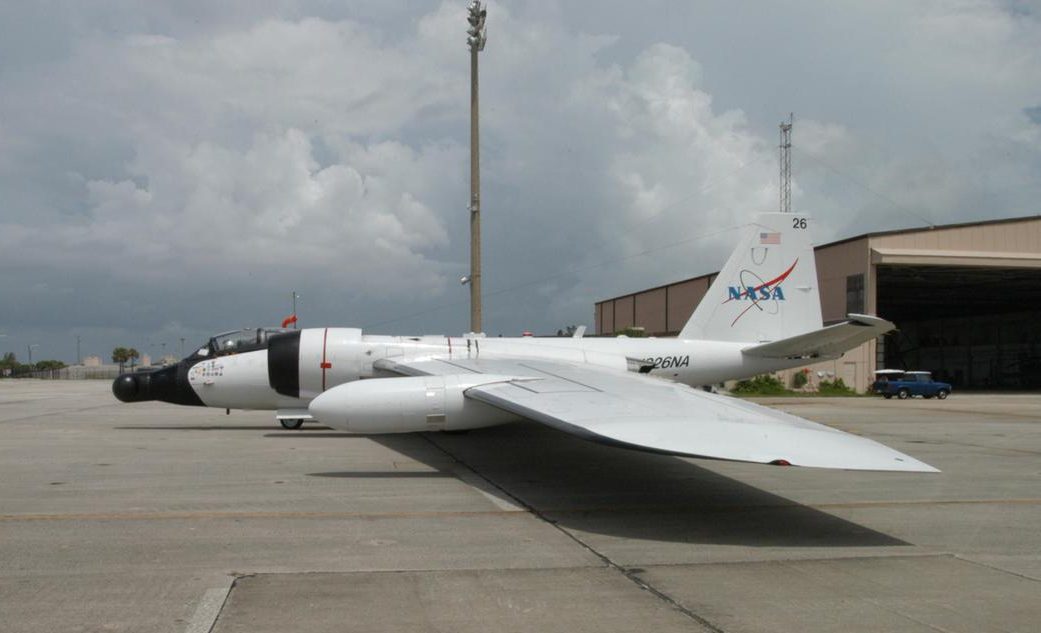
Looking at Earth’s Upper Atmosphere from a Jet Plane
A third experiment aboard NASA’s WB-57s studied the charged layer of Earth’s upper atmosphere called the ionosphere.
The ionosphere is affected by the Sun’s radiation and the eclipse serves as a chance to study their connection in a controlled manner. The project uses an instrument called an ionosonde — which functions like a simple radar — designed at JHU APL. The device sends out high frequency radio signals and listens for their echo rebounding off the ionosphere, which allows the researchers to measure how charged the ionosphere is. The project is led by Bharat Kunduri of Virginia Tech in Blacksburg, Virginia.
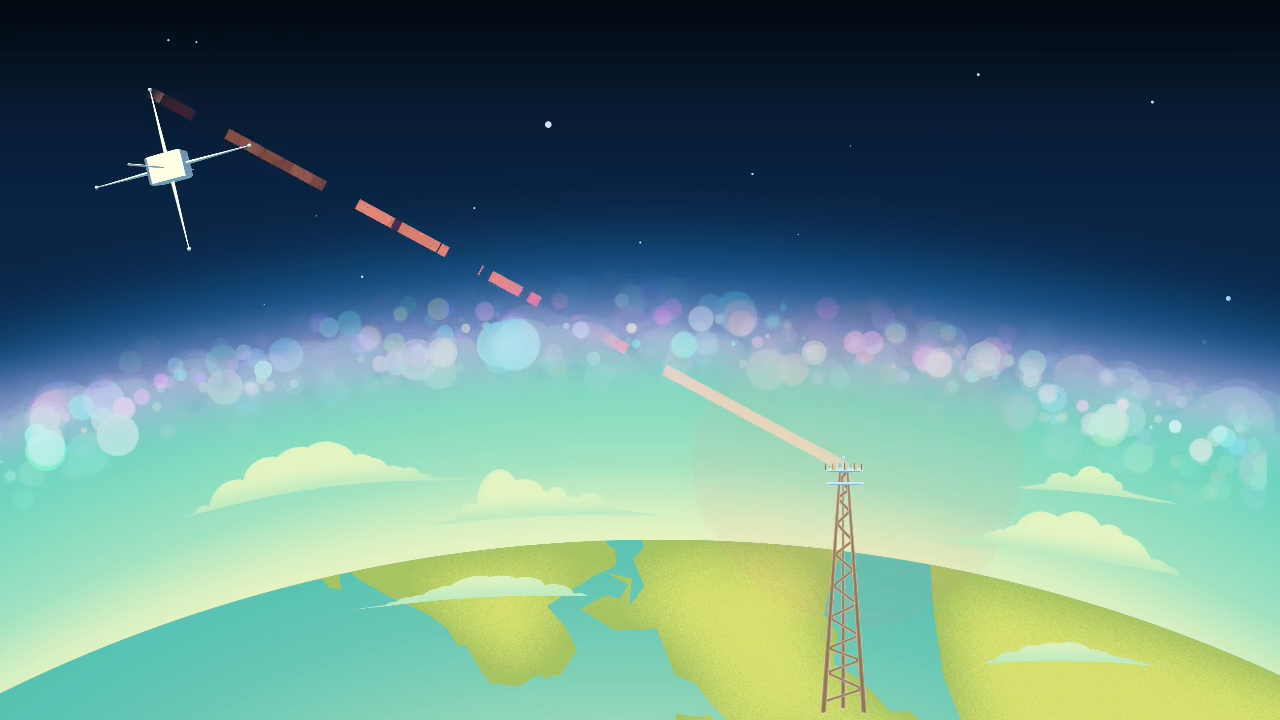
Studying Earth's Atmosphere
SuperDARN
The Super Dual Auroral Radar Network, or SuperDARN, is a collection of radars located at sites around the world. With this network, scientists bounce radio waves off of the ionosphere and analyze the returning signal.
The darkest part of this eclipse’s shadow passes across several locations equipped with SuperDARN radars. SuperDARN monitors space weather conditions in upper layers of Earth’s atmosphere, so the eclipse offered a unique opportunity to study the impact of solar radiation on those layers during the eclipse. A project led by Bharat Kunduri of the Virginia Polytechnic Institute State University uses three SuperDARN radars to study an electrically charged layer of the atmosphere, called the ionosphere, during the eclipse. Kunduri’s team will compare the measurements to predictions from computer models to answer questions about how the ionosphere reacts to a solar eclipse.
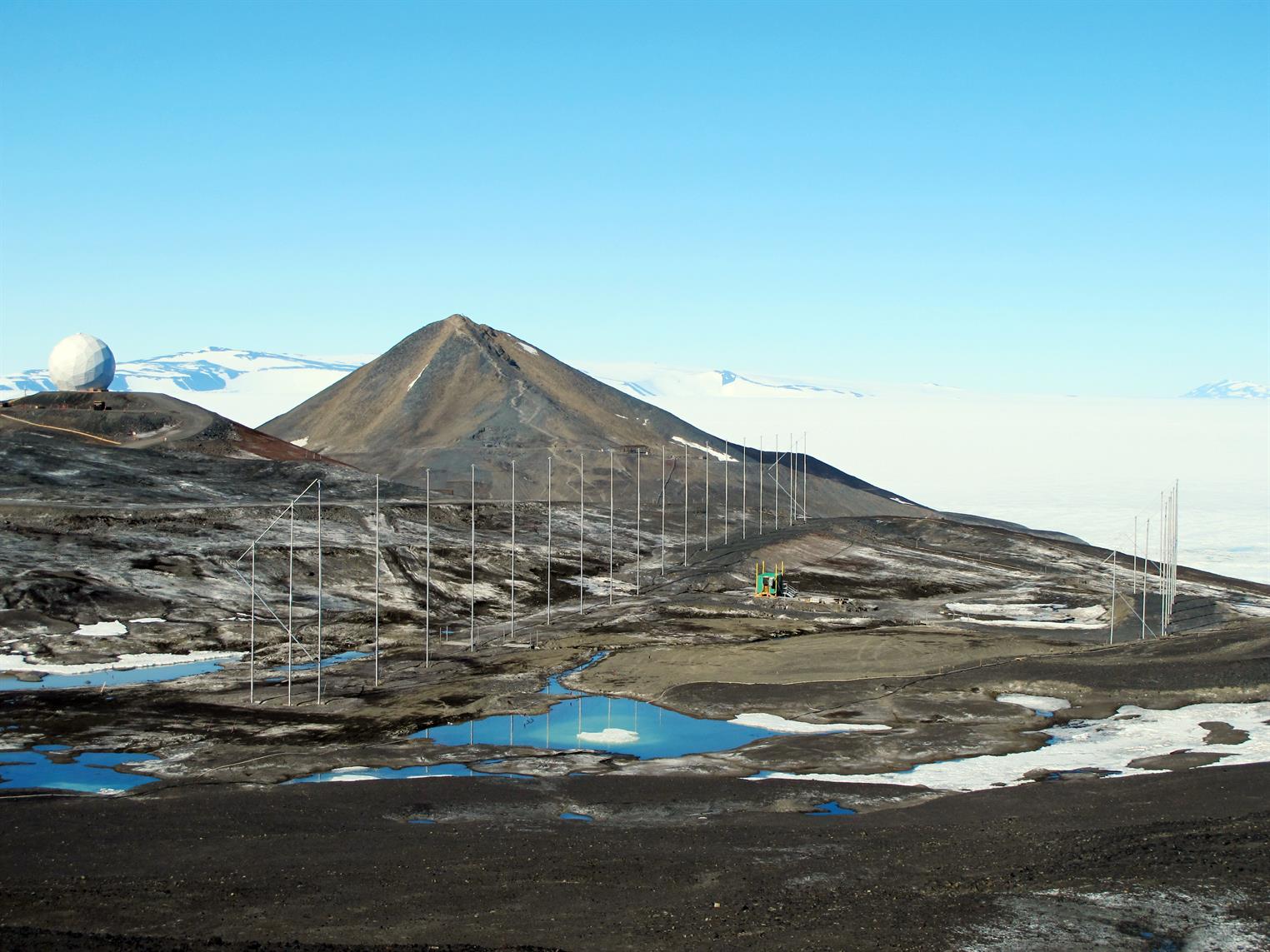
Sounding Rockets
A NASA sounding rocket mission launched three rockets during the 2024 total solar eclipse to study how the sudden drop in sunlight affects our upper atmosphere.
The Atmospheric Perturbations around the Eclipse Path (APEP) mission is led by Aroh Barjatya, a professor of engineering physics at Embry-Riddle Aeronautical University in Daytona Beach, Florida, where he directs the Space Atmospheric Instrumentation Lab. The three rockets comprising the APEP mission launched at 2:40pm, 3:25pm, and 4:28pm ET from NASA's Wallops Flight Facility in Virginia. The rockets reached altitudes of 254 miles, 255 miles, and 256 miles (410 kilometers, 411 kilometers, and 413 kilometers), respectively. Each rocket successfully deployed four small scientific instruments that measured changes in electric and magnetic fields, density, and temperature. This launch presents an opportunity to measure just how widespread the effects of an eclipse are.
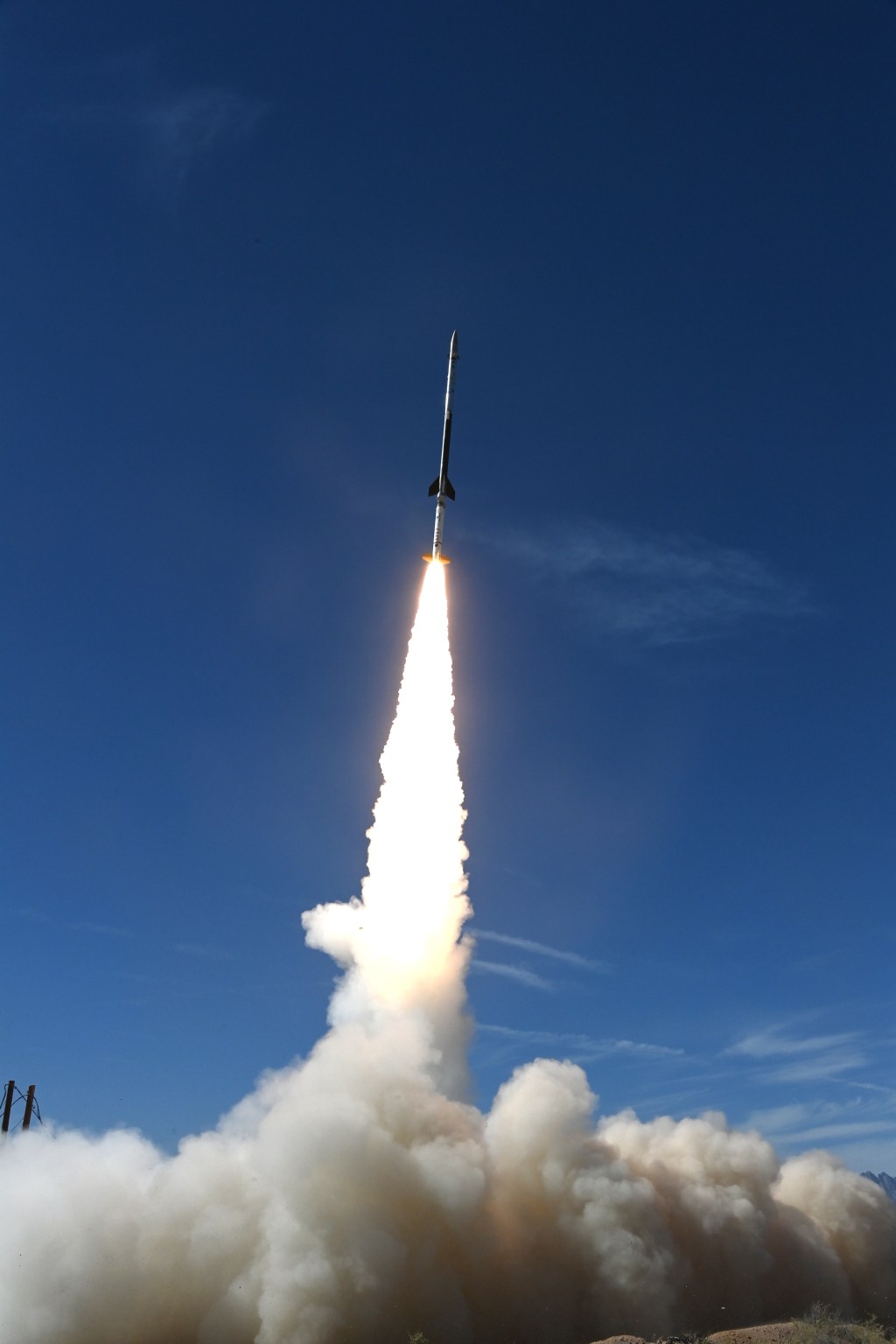
Flying Kites to Measure Elements in the Corona
One eclipse science project, which aims to identify how particles escape the upper solar atmosphere, is rising above with the help of kites.
Using kites to fly a spectrometer 3,500 feet up helps scientists have a better chance at a clear view of the Sun regardless of weather conditions on the ground during the eclipse. The data from the spectrometer, which measures the abundance of key elements in the corona, will help scientists understand how particles escape the Sun through the corona to form the solar wind. The project, which builds on a successful trial run during an eclipse in 2023, is led by Shadia Habbal of the University of Hawaii.
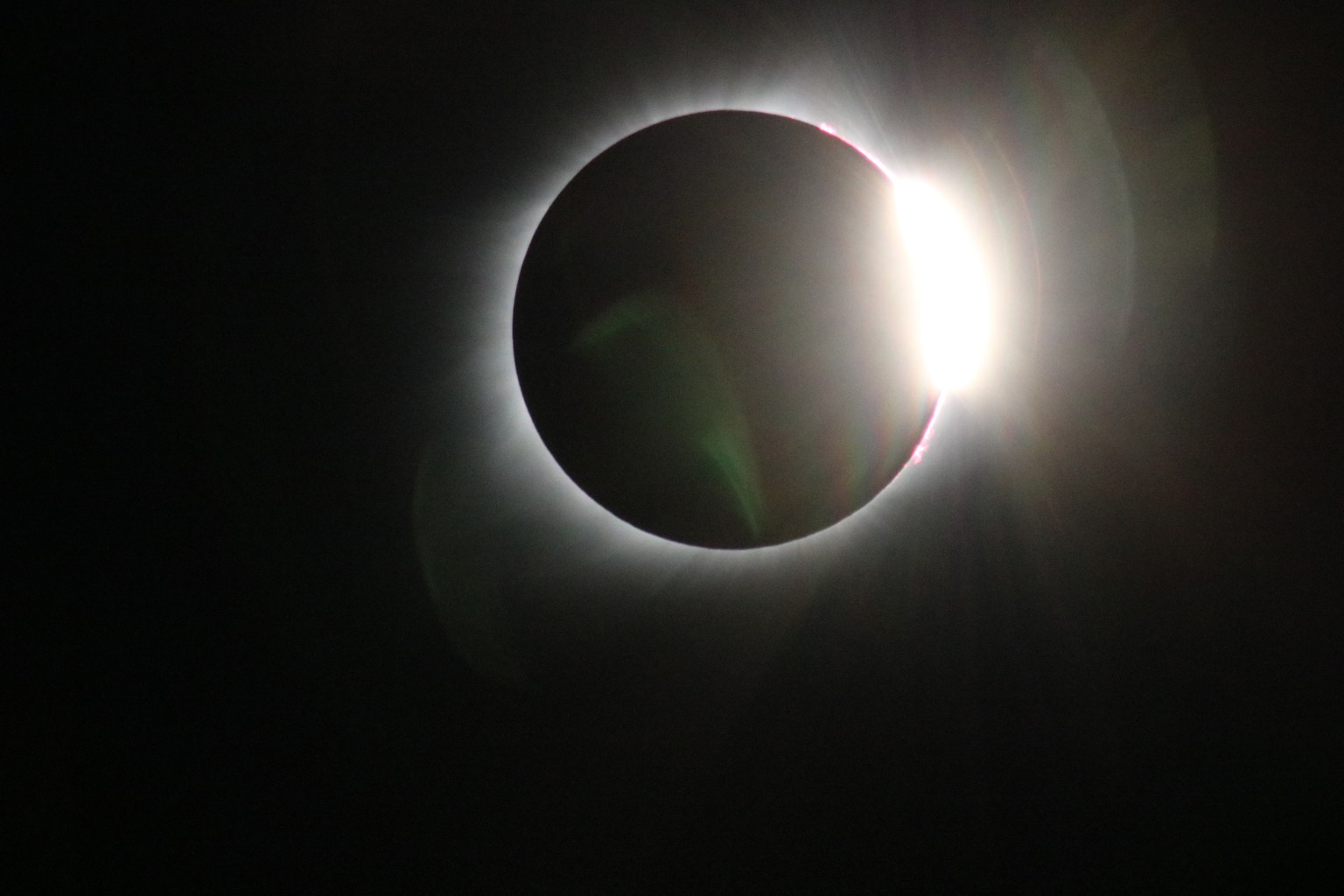
Students Involved in Research
GAVRT Solar Patrol
One team used the 34-meter Goldstone Apple Valley Radio Telescope (GAVRT) to measure subtle changes to the radio emissions from active regions during the 2024 total eclipses.
NASA’s Jet Propulsion Laboratory scientist Thangasamy Velusamy, educators at the Lewis Center for Education Research in Southern California, and students in the center’s Solar Patrol program observed solar “active regions” — the magnetically complex regions that are often marked by sunspots — as the Moon moves over them. The Moon’s gradual passage across the Sun will block different portions of the active region at different times, allowing scientists to distinguish light signals coming from one portion versus another. The technique, first used during the May 2012 annular eclipse, reveals details on the Sun the telescope couldn’t detect before or after the eclipse.
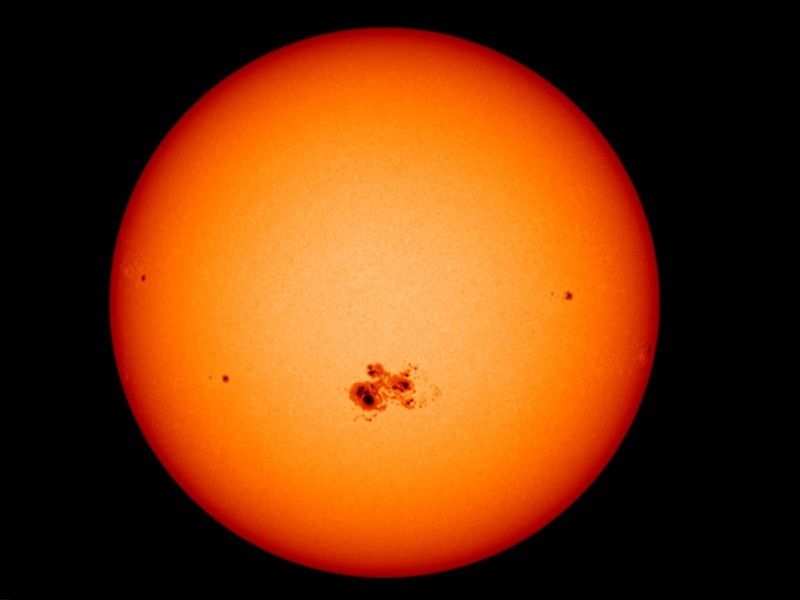
Nationwide Eclipse Ballooning Project
Teams made up of over 750 student participants scattered across the U.S. launched balloons into the Moon’s shadow.
The project involves 53 teams from 75 participating institutions that follow two tracks: engineering and atmospheric science. Engineering teams used innovative large balloon systems to live stream video, observe how Earth's atmosphere changes, and conduct individually designed experiments. Atmospheric science teams flew weather sensors every hour for 24 hours prior to the eclipse and 6 hours after it to study the atmospheric response to the cold, dark shadow.
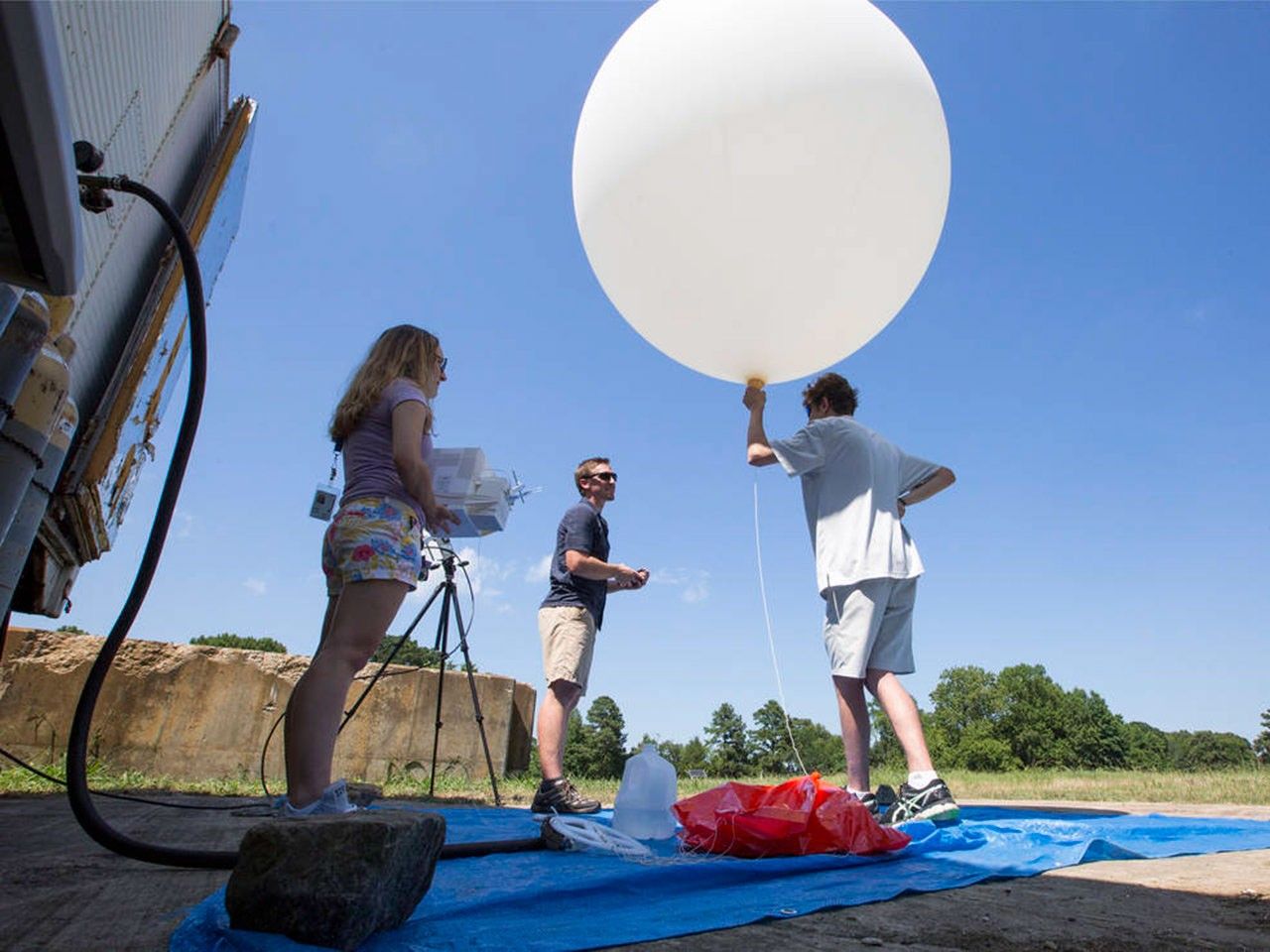
Get Involved!
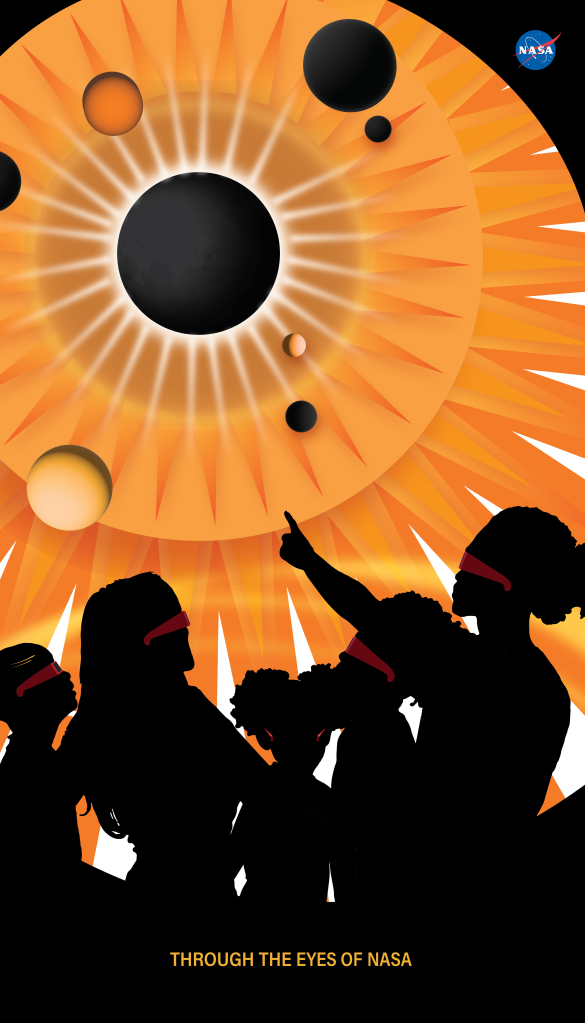
Eclipse 2024 Citizen Science
Did you know there are other NASA projects studying the eclipse that involve citizen scientists? Opportunities across the eclipse path are available for people with any citizenship and experience level!

Eclipse Science Resources
The Whole Heliosphere and Planetary Interactions group has curated a repository for eclipse activities. This list includes eclipse model predictions, various observatories, activities, and experiments.
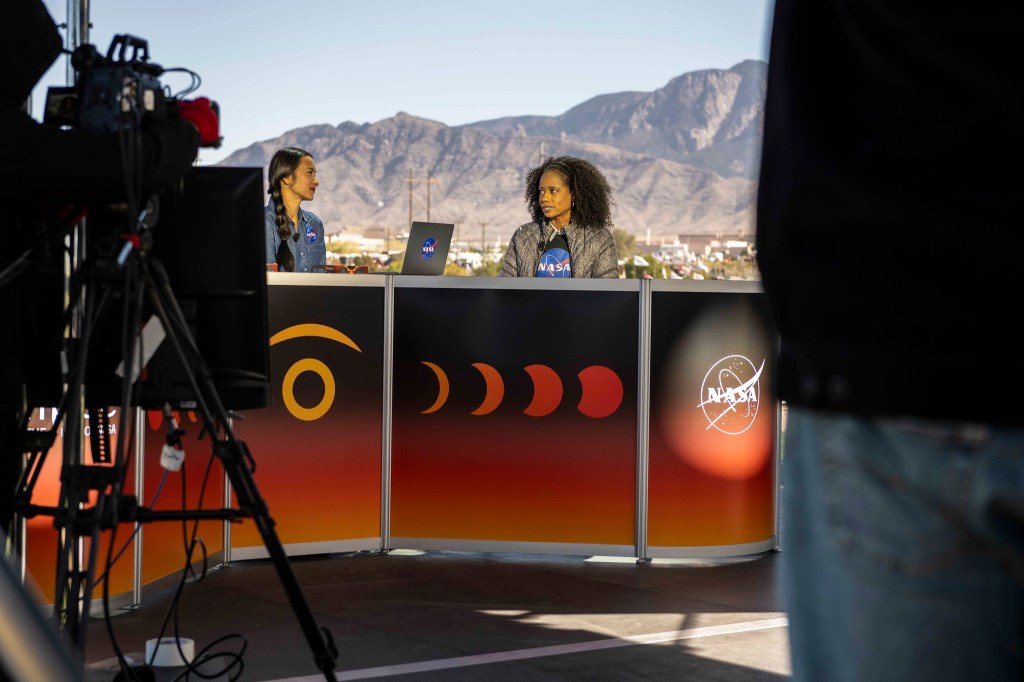
NASA's Eclipse Broadcast
Watch the broadcast of the total solar eclipse, telescope feeds across the path, a broadcast in Spanish, and a live stream of sounding rockets, aired live on April 8, 2024.



























